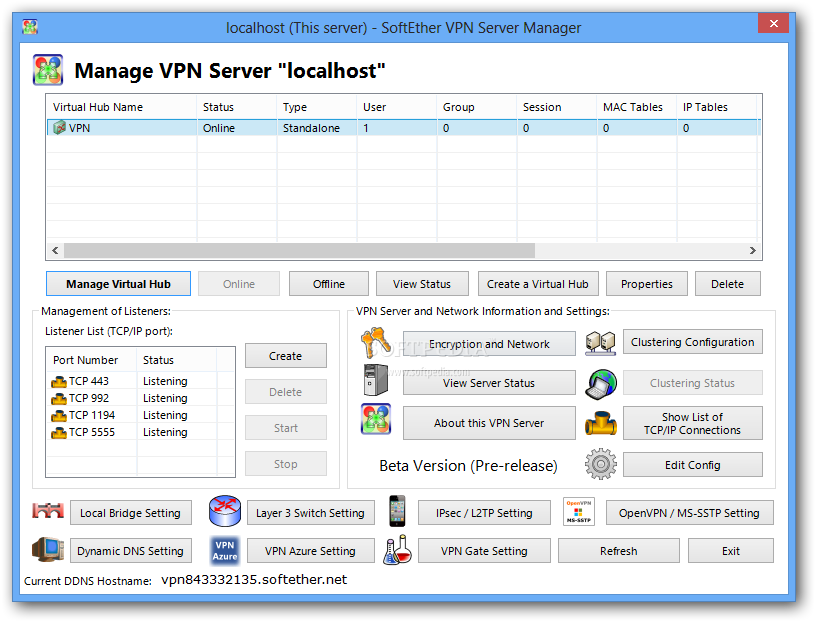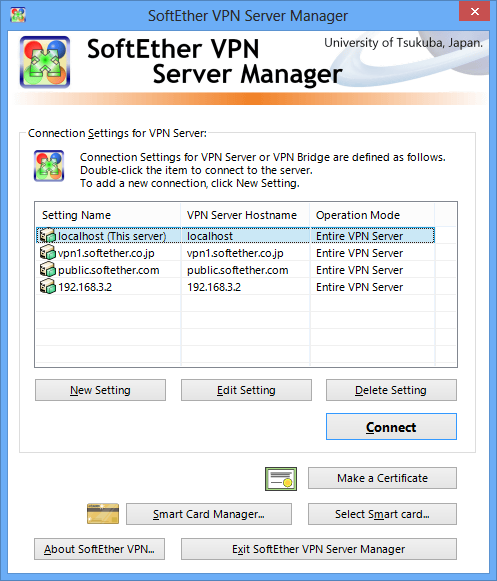

On the Ready to Install screen, click Next.Accept the default directory, C:\Program Files\SoftEther VPN Server, and click Next.Read the Important Notices, and click Next.Read the End User License Agreement, check the box to agree to the End User License Agreement, and click Next.Select software component SoftEther VPN Server, and click Next.If User Account Control pops up, click Yes to allow changes to your device.Read the initial information screen, then click Next.It will have a name that looks like softether-vpnserver_vpnbridge-v4.38-976.08.17-windows-x86_圆4-intel. In your Downloads folder, find the Installer executable. Now for the download of the SoftEther VPN installer: When you’re done, close the Settings app.Right-click on the Windows Start button, and select Settings.You can change the power settings on a Windows PC like this: One more point about home PCs! You need a Power Plan that ensures your computer will not be asleep when clients try to connect. Consult your router documentation to learn how to do these steps on your particular make and model of router. Instructions for doing the above vary from router to router. Port forward these ports from your router to your PC.Open ports 500/udp, 1701/udp, and 4500/udp for input.

In a typical home network, where you are behind a router, you also need to:

In the Windows search box (next to the Start button), type firewall.On your Windows computer, you do that like this: Open Firewallįor traffic to reach an L2TP/IPsec server, you need to open ports 500/udp, 1701/udp, and 4500/udp in your computer’s firewall. You have a friend in a foreign country who needs unblocked access to the InternetĪfter you’ve followed along with this tutorial, you’ll have a working L2TP/IPsec server on your Windows computer.You want to securely access the Internet from a coffee shop or airport.Employees need to connect to a company LAN from outside the office.This post shows you how to use a Windows computer as a VPN server.


 0 kommentar(er)
0 kommentar(er)
